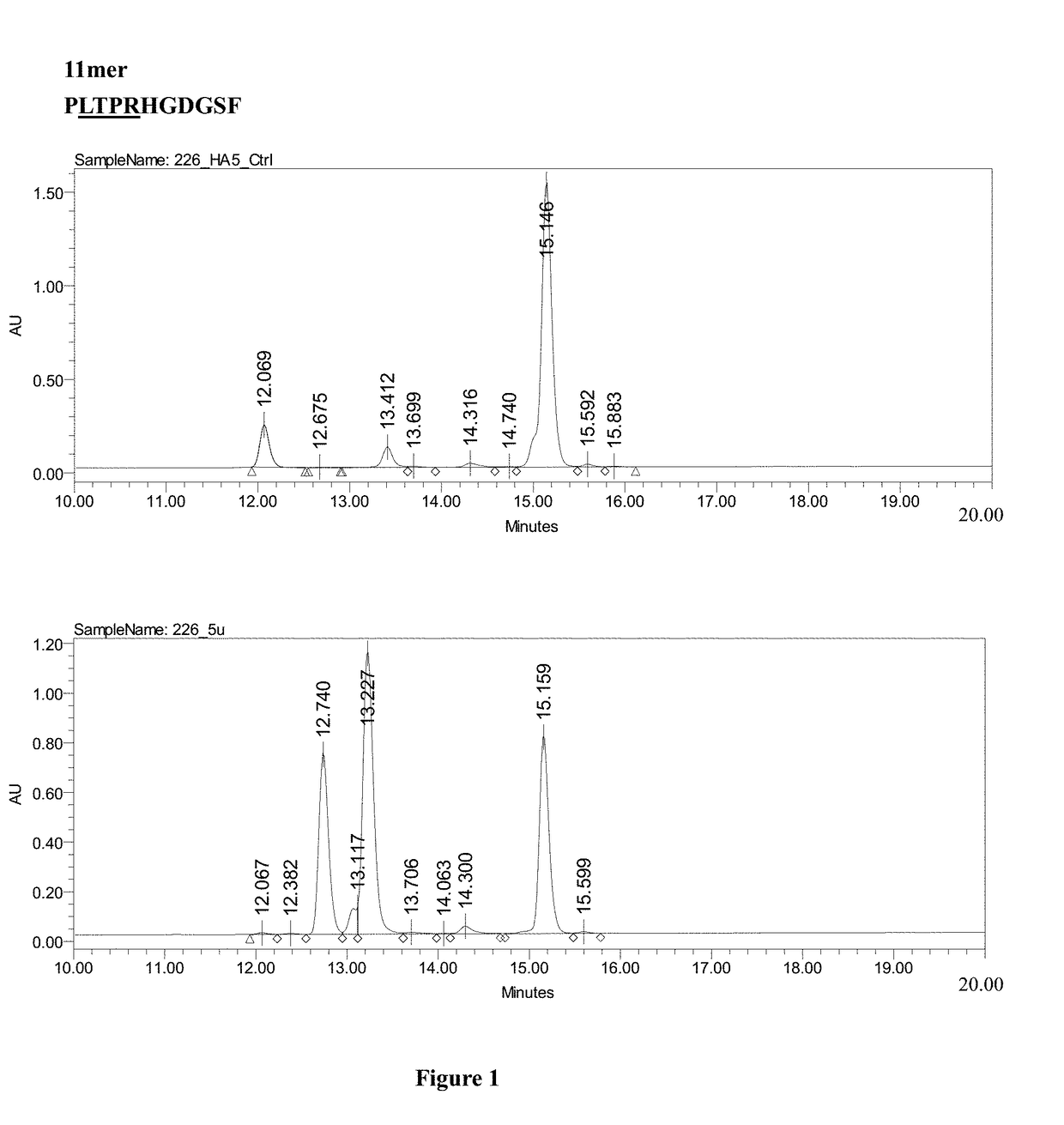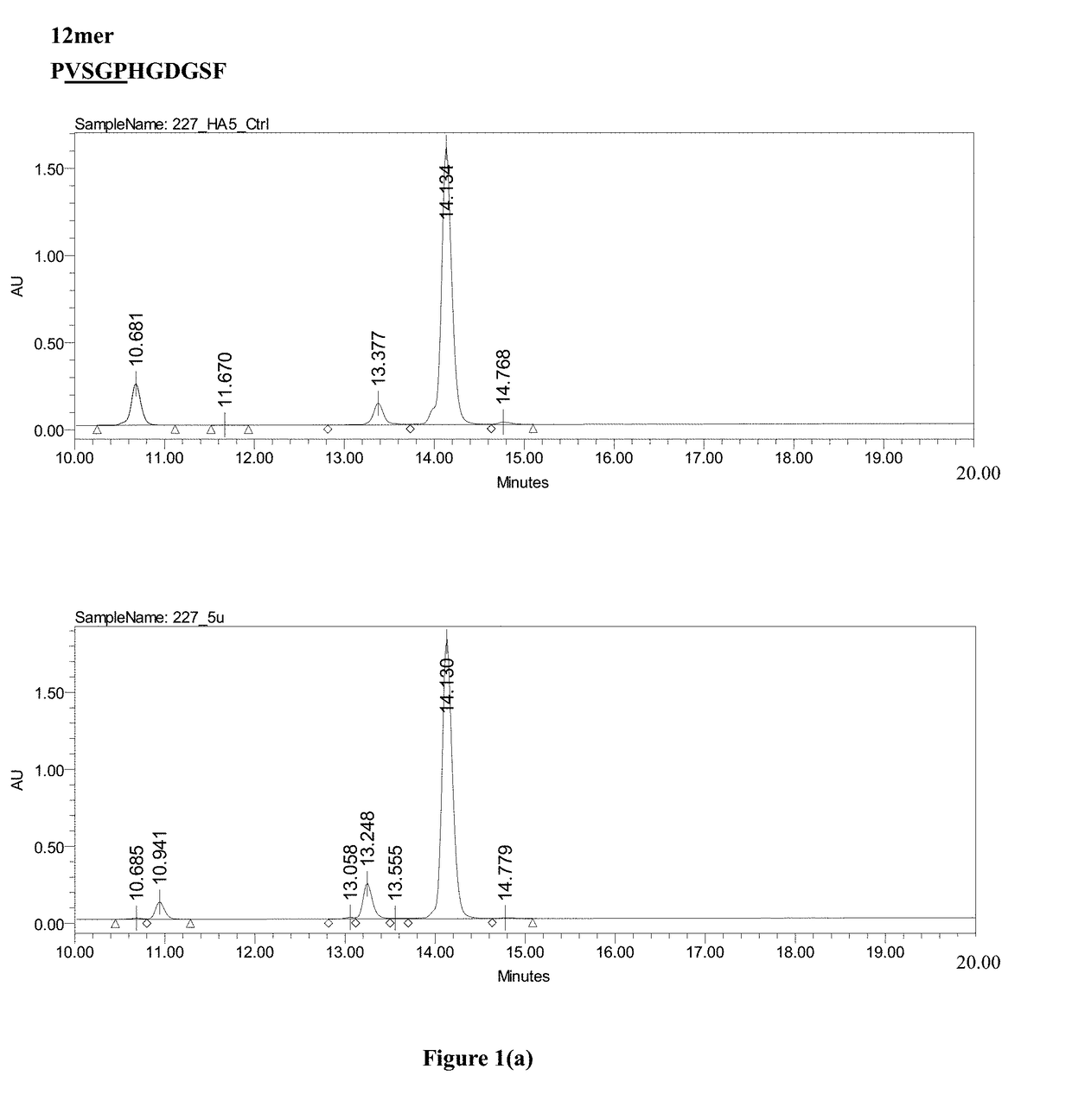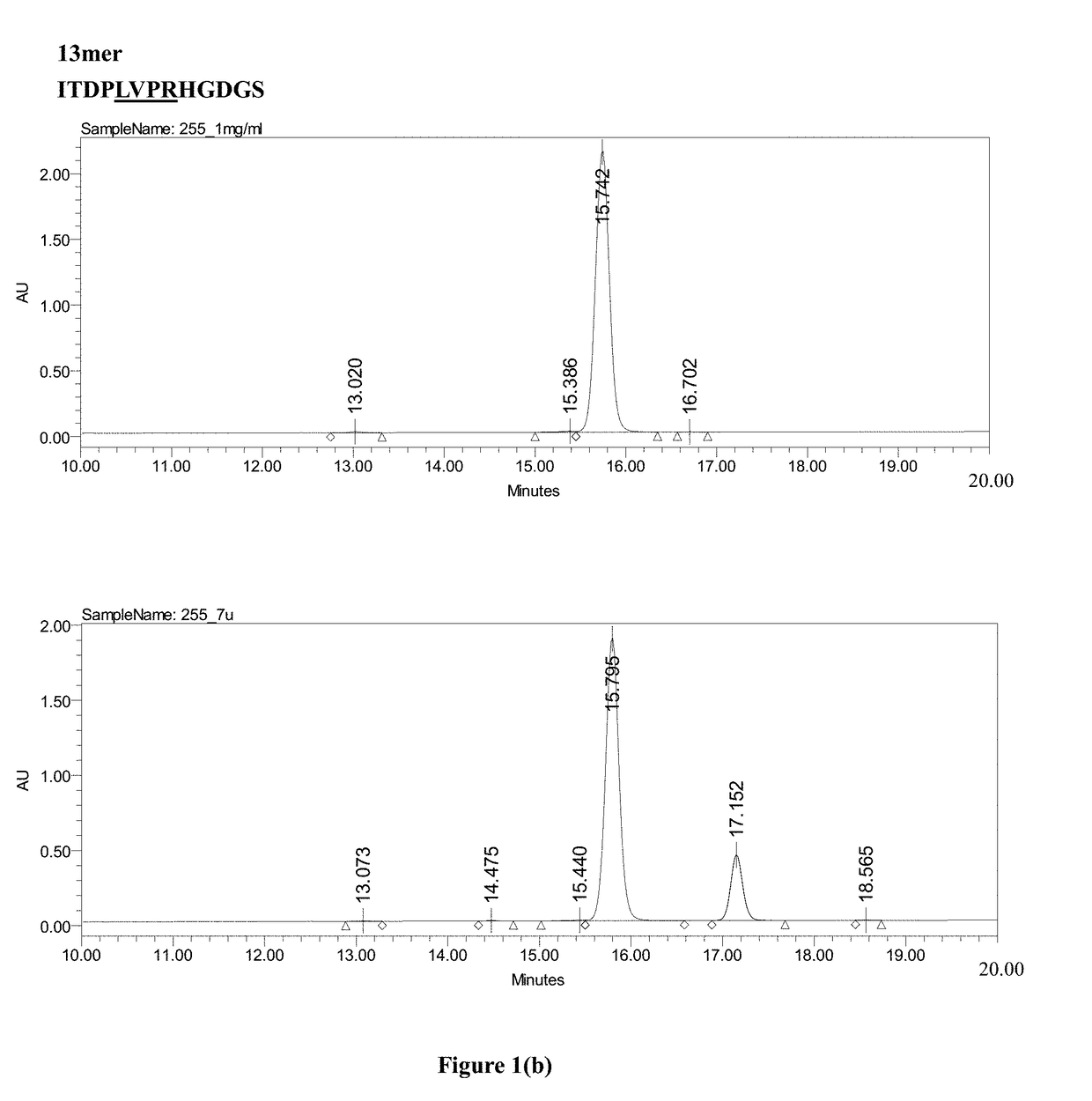Method of preparing glucagon-like peptide-2 (glp-2) analog
a technology of glucagon-like peptides and analogs, applied in the field of peptide preparation, can solve the problems of inability to produce a peptide that is identical to a natural one, limited number of 4k peptide segments, and inability to achieve the purification of a natural target protein or peptid
- Summary
- Abstract
- Description
- Claims
- Application Information
AI Technical Summary
Benefits of technology
Problems solved by technology
Method used
Image
Examples
embodiment 1
PR-GLP-2 Analog Expression Vector
[0029]Please refer to FIG. 2.
[0030](a) A nucleic acid sequence containing a nucleic acid sequence encoding the tag protein His6 and a nucleic acid sequence encoding the Smt3 protein of distillers' yeast were prepared by PCR, treated with purified and replicated NdeI and BamHI restriction enzymes for deoxyribonucleic acids, and then cloned into a pET30 expression vector (Novagen, USA) to form a His-Smt3 expression vector, as shown in part (a) of FIG. 2.
[0031](b) A nucleic acid sequence encoding the LTPR linker peptide (LTPR) and GLP-2 analog were prepared by PCR, as shown in part (b) of FIG. 2, using a template sequence as set forth in SEQ ID NO: 10 and primers as set forth in SEQ ID NOS: 4 and 5.
[0032](c) The His6-Smt3 expression vector in (a) and the nucleic acid sequence encoding LTPR and GLP-2 analog in (b) were treated with the BamHI and EcoRI restriction enzymes in order to clone the nucleic acid sequence encoding LTPR and the GLP-2 analog into ...
embodiment 2
PR-GLP-2 Analog Fusion Protein
[0033]The His6-Smt3-LTPR-GLP-2 analog expression vector obtained from embodiment 1 was subjected to DNA sequencing and was confirmed to be a His6-Smt3-LTPR-GLP-2 analog expression vector with the correct nucleic acid sequence. The His6-Smt3-LTPR-GLP-2 analog expression vector was transformed into a BL21(DE3)-competent cell (Escherichia coli), and a GLP-2 analog-containing transformed strain, named ST16, was then screened out from an LB (Luria-Bertani) agar medium containing 50 mg / L of kanamycin and was cultivated in an LB nutrient broth containing 50 mg / L of kanamycin, into which glycerol was subsequently added at 10%, and which was afterward stored in separate tubes in a −70° C. freezer. Remove a 10 μl aliquot from one tube of the ST16 transformed strain was cultivated overnight into 5 ml of fresh LB nutrient broth containing 50 mg / L of kanamycin at 37° C., and a small sample was taken from the tube the next day, added into 100 ml of fresh LB nutrient ...
embodiment 3
6-Smt3-LTPR-GLP-2 Analog Fusion Protein with Thrombin to Produce GLP-2 Analog Peptide
[0038](a) The His6-Smt3-LTPR-GLP-2 analog fusion protein roughly extracted from the E. coli transformant cells in embodiment 2 was added into a column containing Ni2+ resin and was washed with the washing buffer prepared in embodiment 2. The His6-Smt3-LTPR-GLP-2 analog fusion protein bound to the Ni2+ resin could not be washed out in the beginning but was eluted from the Ni2+ resin when 16-30% gradient elution was performed. The Coomassie blue staining results after SDS-PAGE analysis reveal a single band as shown in FIG. 4, demonstrating that the His6-Smt3-LTPR-GLP-2 analog fusion protein obtained was pure to a certain degree. The ultimate yield was 9 mg of fusion protein out of each 100 ml or so of culture medium (nutrient broth).
[0039](b) Furthermore, the His6-Smt3-Linker-GLP-2 analog fusion protein purified with the Ni2+ affinity chromatography column was cleaved with thrombin. The two major band...
PUM
| Property | Measurement | Unit |
|---|---|---|
| pH | aaaaa | aaaaa |
| molecular weight | aaaaa | aaaaa |
| molecular weight | aaaaa | aaaaa |
Abstract
Description
Claims
Application Information
 Login to View More
Login to View More - R&D
- Intellectual Property
- Life Sciences
- Materials
- Tech Scout
- Unparalleled Data Quality
- Higher Quality Content
- 60% Fewer Hallucinations
Browse by: Latest US Patents, China's latest patents, Technical Efficacy Thesaurus, Application Domain, Technology Topic, Popular Technical Reports.
© 2025 PatSnap. All rights reserved.Legal|Privacy policy|Modern Slavery Act Transparency Statement|Sitemap|About US| Contact US: help@patsnap.com



